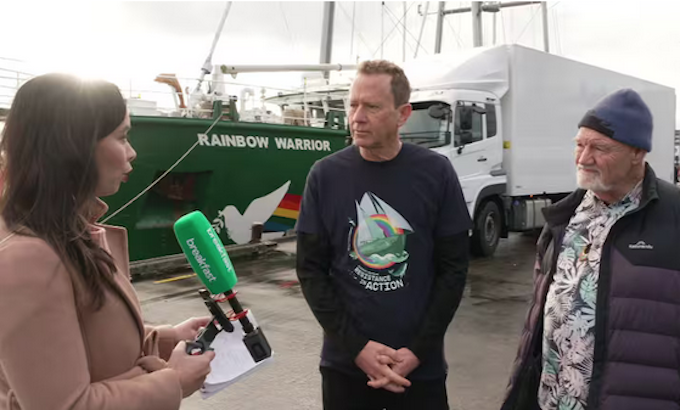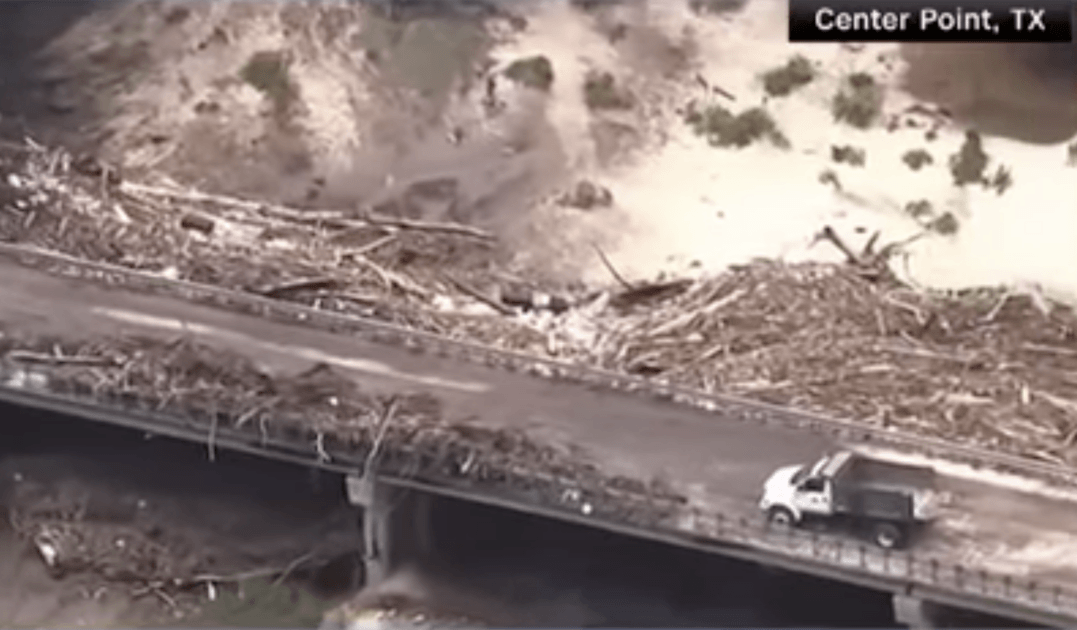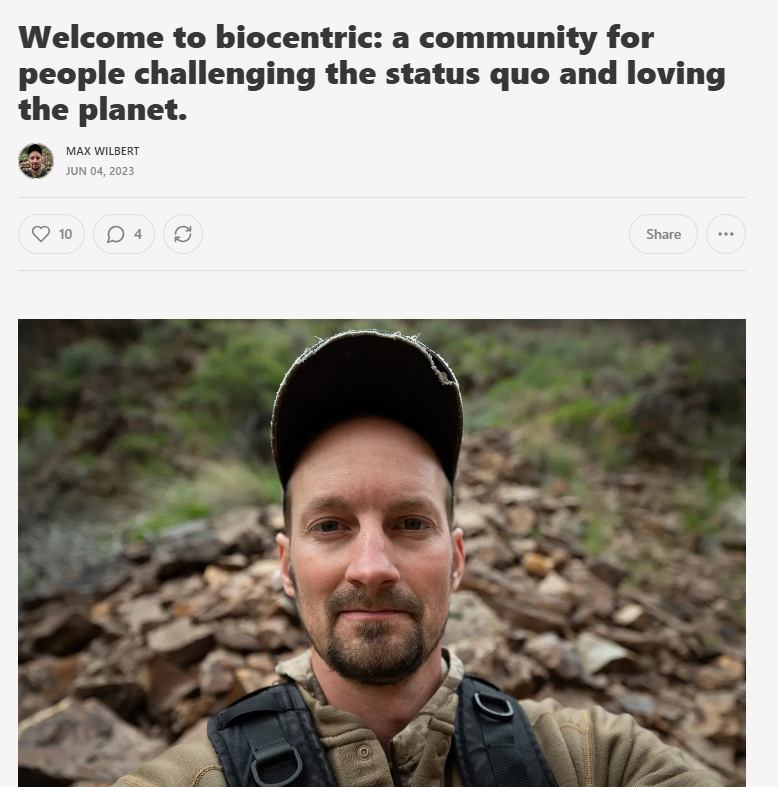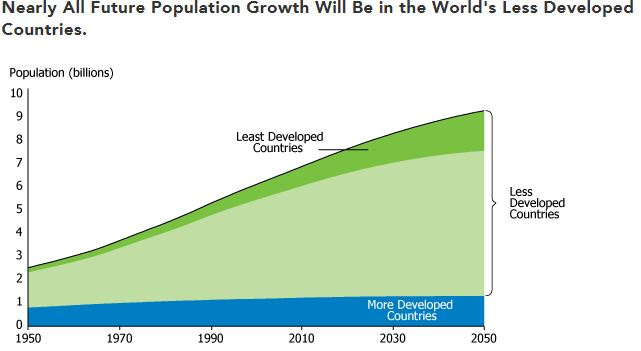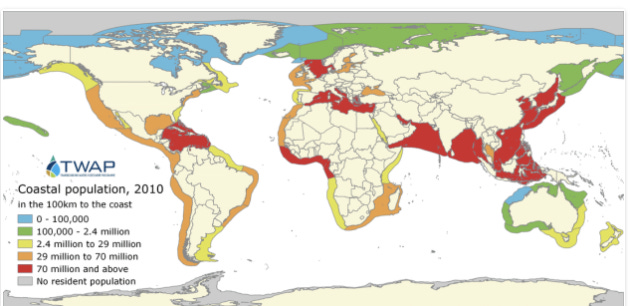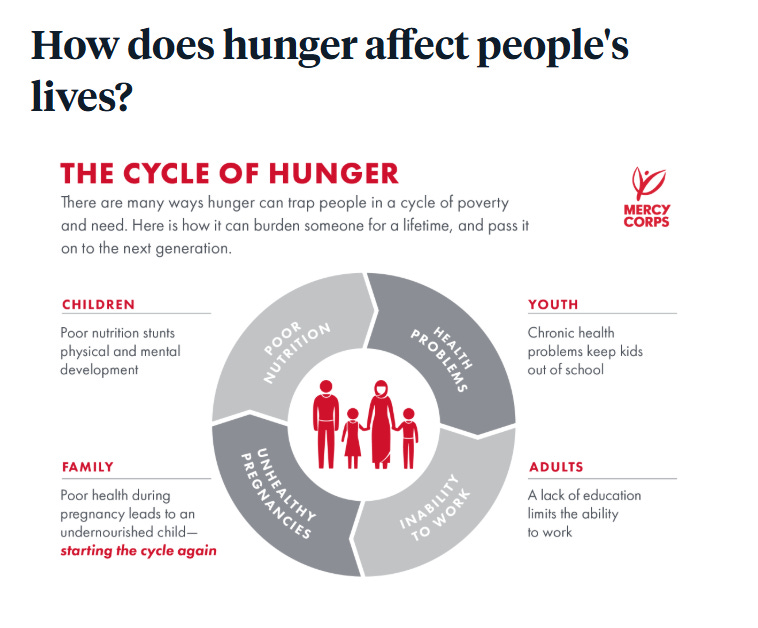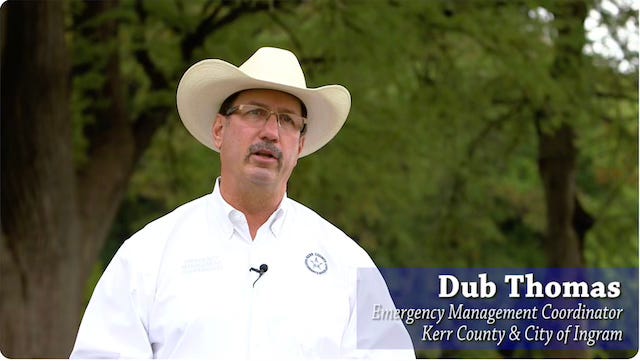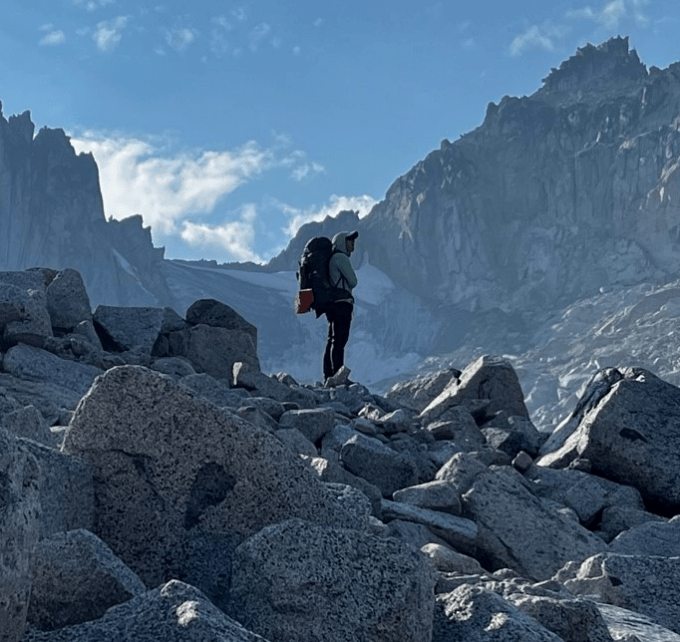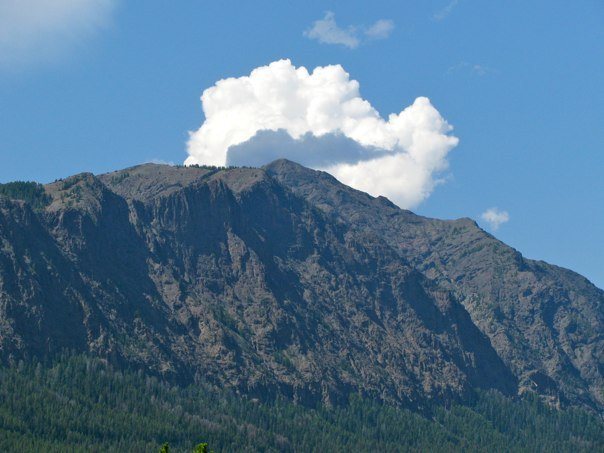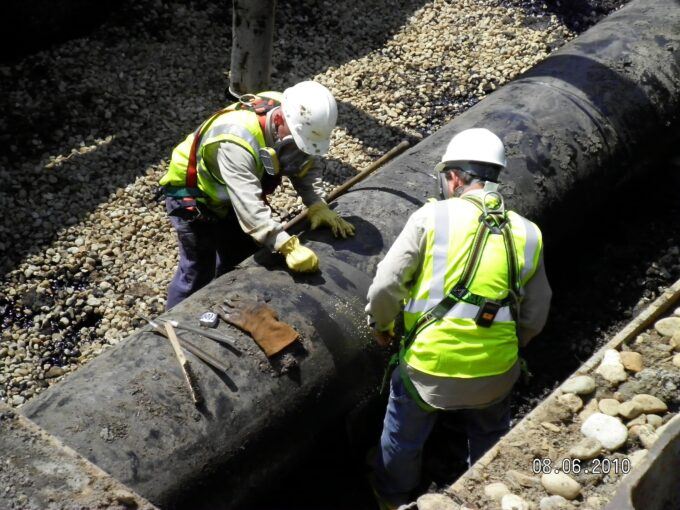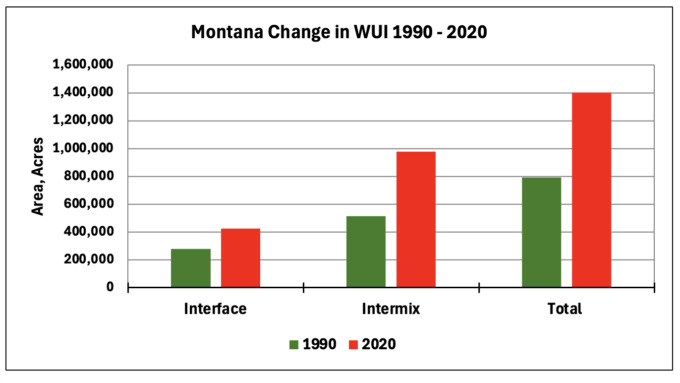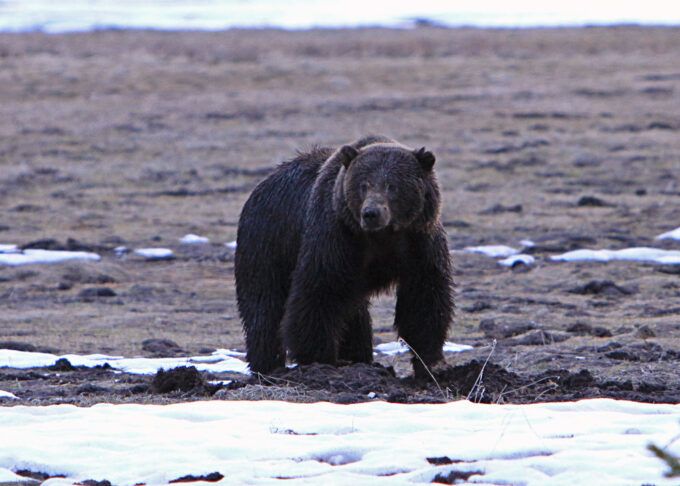






























































Yosemite Valley, Yosemite National Park. Photo: Jeffrey St. Clair.
Ecotourism is often hailed as a sustainable alternative to traditional travel—an opportunity to explore unique environments while supporting local communities and conservation efforts. Yet beneath its green image lies a more complex and often troubling reality. When poorly managed, ecotourism can inflict more harm than good, undermining the very ideals it seeks to uphold.
The ecotourism industry has emerged as one of the fastest-expanding sectors within global travel. According to the Global Ecotourism Network, in 2023, eco-travel accounted for an estimated 20 percent of the international tourism market, with projections indicating continued double-digit annual growth. In 2023 alone, the global ecotourism market was valued at over $200 billion. Economic predictions estimate that the market could reach between $759 billion by 2032 and $945 billion by 2034.
Despite this rapid growth and economic promise, ecotourism enterprises have faced significant criticism from conservationists and researchers. In a 2020 Architectural Review article titled “Outrage: The Ecotourism Hoax,” Smith Mordak, chief executive of the UK Green Building Council (UKGBC), asserted that “As long as the underlying principle behind tourism is to bring growth-stimulating inward investment, tourism cannot be made ‘eco.’”
The Ecotourism Paradox
Mordak’s remarks expose the deeper contradictions within many so-called “sustainable” initiatives, drawing attention to the pervasive issues of greenwashing and bluewashing. Just as corporations may falsely brand themselves as environmentally friendly or socially responsible to appeal to conscious consumers, ecotourism companies often mask exploitative or unsustainable practices behind the veneer of conservation. Ultimately, without a fundamental shift in the economic principles that underpin ecotourism, efforts to make the industry sustainable risk becoming performative, focusing on marketing rather than achieving meaningful impact.
According to UKGBC’s Mordak, “Like everything else nurtured in the agar jelly of capitalism, noble intentions soon become corrupted, and the ‘eco’ prefix amounts to little more than a greenwashing rebrand.”
Ecotourism is built on a dual promise—to protect natural environments and to share them with visitors—yet fulfilling one often puts the other at risk. In April 2025, I interviewed Dave Blanton, founder of Friends of the Serengeti. He started the organization in response to a proposed commercial highway through Serengeti National Park, a development that would have fragmented the ecosystem and destroyed critical migratory routes. He explained the paradox: “On one hand, the growth of tourism in the Serengeti-Mara region will generate government revenue and create jobs. On the other hand, it will increase environmental pressure and diminish the traveler experience.”
Blanton, whose connection to the Serengeti spans over four decades, said, “It is difficult to ensure high standards and best practices in the face of increased demand, competition, and overly ambitious goals for growth.
Grassroots Origins, Global Ideals
Rooted in principles of sustainability and community engagement, grassroots ecotourism, which emerged in the early 1980s, was developed as a response to growing global concerns about environmental degradation and the negative impacts of mass tourism. It emphasizes low-cost, purpose-driven travel experiences that foster direct contributions to conservation and local development.
The current grassroots volunteer travel industry—often referred to as “voluntourism”—continues to attract socially conscious travelers seeking meaningful, hands-on experiences that contribute to local communities and conservation efforts. Programs typically involve small-scale, community-led initiatives that prioritize local needs, such as wildlife monitoring, habitat restoration, education, or sustainable agriculture, and take the form of educational exchanges or participation in field research.
Volunteer travelers opting for low-cost expeditions may pay between $20 and $50 per day, which usually covers necessities such as meals, local transportation, and accommodation. Lodging in these programs is typically modest, ranging from rural homestays and shared guesthouses to dormitory-style lodgings or even tents, depending on the location and nature of the work.
Some who have participated in volunteer travel expeditions have reported a lack of resources and infrastructure, which leaves both volunteers and host communities struggling to meet basic needs. Poorly managed programs are another common complaint, with some volunteers arriving to find disorganized projects, minimal supervision, and unclear objectives. Especially troubling is that some wildlife conservation programs have been accused of neglecting animals by housing them in inadequate enclosures—small, unsanitary, or unsafe spaces that can cause stress, injury, or behavioral problems.
Conservation or Commercial Growth?
Increasingly, however, the voluntourism model is being supplanted by the proliferation of large-scale, high-end commercial ventures, where travelers are observers rather than helpers. The modern ecotourism landscape is increasingly dominated by luxury enterprises, some of which feature elegant eco-lodges, boutique resorts, and nature-based retreats offering the comforts of premium hospitality.
Accommodations are often situated in remote, pristine environments, such as nature reserves, rainforests, or coastal regions. Amenities may include private villas or bungalows, gourmet organic cuisine, private wildlife excursions, and wellness offerings like yoga and spa treatments. Prices for these luxury experiences can range from several hundred to several thousand dollars per night.
With the expansion of major hotel chains and multinational businesses in conservation areas, critics argue that the scale and infrastructure required to sustain such operations can strain fragile ecosystems and disrupt local communities and wildlife.
Matt Kareus, executive director of the International Galápagos Tour Operators Association (IGTOA), focuses his efforts on preserving the unique biodiversity of the Galápagos Islands through education, policy advocacy, and collaborative conservation initiatives. When I spoke to him in April 2025, he stated that the most serious long-term threat to the Galápagos is runaway tourism growth, which has compromised the natural resources and local infrastructure on the Ecuadorian islands. Like Blanton, Kareus emphasized the need for stricter environmental standards and accountability to ensure that ecotourism remains a tool for conservation, rather than a vehicle for unchecked commercial growth.
Kareus says that the issue is not whether luxury ecotourism is necessarily better or worse than other forms of tourism; instead, it’s a matter of how well tourism itself is managed and regulated in individual regions.
“There are a lot of potential benefits when it’s done thoughtfully and responsibly, just as there can be a lot of downsides to more budget-friendly modes of tourism if they aren’t done in the correct way,” said Kareus, who offered an example: “Imagine a 15-room eco-lodge surrounded by a nature reserve—it could potentially generate similar economic and employment benefits as a standard 100-room hotel, with far less negative impact on the surrounding environment.”
Luxury ecotourism developments are increasingly incorporating advanced eco-friendly design, planning, and investment strategies, emphasizing features such as solar energy systems, rainwater harvesting, passive cooling architecture, the use of locally sourced and renewable building materials like bamboo or reclaimed wood, as well as carbon offset programs. Operators assert that strategic site planning minimizes ecological disruption by preserving native vegetation, protecting wildlife corridors, and adhering to low-impact construction methods.
The Commodification of Culture
While mass-market ecotourism promises immersion in natural environments and meaningful cultural exchanges, some critics argue that the result is often a curated version of nature and culture—polished, exclusive, and often removed from the realities of place.
Researchers attribute this conceit to the “white savior complex,” a mindset—often held by well-meaning but misinformed Western travelers—where they perceive themselves as heroic figures “rescuing” impoverished or marginalized communities, particularly in the Global South, through short-term volunteerism or conservation work, but often end up reinforcing colonial-era power imbalances, where Western values, knowledge, and presence are seen as superior or necessary for progress. At the same time, local expertise, autonomy, and cultural practices are undervalued or ignored.
In my interview with her in May 2025, Michelle Mielly, professor of law, management, and social sciences at Grenoble Ecole de Management (GEM), commented, “Indigenous people want to be left alone. We keep colonizing these cultures.”
Commodification not only undermines the integrity of local traditions but also distances travelers from the raw, unfiltered experiences that make travel transformative, turning sacred rituals and cultural practices into spectacles for outsiders. Academic researchers refer to the practice as “cultural extractivism”—the appropriation of Indigenous cultural practices and traditions by commercial enterprise.
Professor Mielly offered an instructive example in the increasing popularity of ayahuasca retreats in the Amazon River Basin. Ayahuasca, a psychedelic brew made from native plants that has been used for centuries by Indigenous tribes for its spiritual and therapeutic properties, is being successfully marketed to Western tourists as a psychedelic substance that promises a mind-altering experience worth traveling for.
According to studies, ayahuasca has demonstrated antidepressant effects, offering hope for many who don’t react to classic interventions. Retreats are often hosted in remote jungle settings in countries like Peru, Brazil, or Colombia, and are led by Indigenous shamans or facilitators trained in local spiritual and healing practices. However, Mielly explains that the significance of the Amazon rainforest extends far beyond its role as a habitat. “[Indigenous communities] derive their culture, language, and social order from the natural structure of the forest,” she says.
Preservation Without Permission
In many cases, protected areas are established or expanded to accommodate ecotourism without the full consent or involvement of the people who have historically lived on and stewarded the land. This has led to the displacement of Indigenous groups, stripping them of access to ancestral territories and traditional livelihoods under the guise of environmental preservation.
“While it’s no surprise that the original concept of ecotourism has been obscured by less virtuous projects, they become more problematic when they block local communities from ancestral lands or even involve their forced relocation,” wrote Mielly in a 2023 article in The Conversation. Mielly cites several examples of forced displacement of Indigenous populations under the crush of ecotourism development—including the eviction of 16 villages on Rempang Island, Indonesia, to make way for a solar panel factory and “eco-city.”
“Eco-projects are not necessarily humanitarian projects,” noted Mielly, invoking how the three pillars of sustainability—environmental, social, and economic— are not always upheld within the ecotourism industry. Together, these pillars support the goal of meeting present needs without compromising the ability of future generations to meet their own needs. But Mielly is cautious. “We are so lucky to have Indigenous people,” Mielly says. “They are our past, our future, and the key to our survival.”
“A Contest for Land”
Major infrastructure projects are increasingly encroaching on ancestral lands, displacing Indigenous communities and cutting them off from traditional territories and livelihoods, says Mielly, noting that “a contest for land is a contest for life; ecotourism is an invasion of these spaces.”
To study the ways in which poorly regulated ecotourism initiatives can reinforce historical patterns of exclusion and dispossession, Mielly and a team of researchers from GEM organized a dialogue with members of the Mbyá Guaraní community in the coastal region of Maricá, Brazil, to examine how business schools and multinational corporations influence Indigenous land rights.
The discussion centered on the Mareay project — an ambitious proposal to develop a vast coastal area through partnerships with major hospitality companies, which will include five luxury hotels, a resort with a golf course, residential units, an education complex, a health center, and a commercial area. Mielly cautioned that the “Disneyfication” of ecotourism ventures on the scale and scope of the Mareay project raises critical questions about the harm ecotourism developments inflict on coastal landscapes, local livelihoods, and Indigenous ways of life.
“When we have great income inequalities, ecotourism becomes ethically challenging,” said Mielly. “This is where we have to shift our gaze. Indigenous people want to be left alone. They don’t understand the value of these enterprises engulfing their communities, and if they do, they may take large cash settlements, but they lose their land,” she said, adding, “We keep colonizing these cultures.”
Infrastructure & Impact
This tension mirrors broader patterns observed across Latin America, where ambitious infrastructure projects often claim to be sustainable while dramatically reshaping environments and economies.
Increasingly, governments and private stakeholders are developing and investing in new airports, eco-friendly lodges, and transportation networks. These developments aim to strike a balance between supporting economic growth through tourism and protecting the ecosystems that attract visitors. However, studies suggest that large-scale infrastructure projects could shift the tourism model from high-value, low-impact travel to runaway mass tourism, with irreversible environmental and sociocultural consequences.
For instance, in preparation for hosting the COP30 climate summit in November 2025, Brazil is constructing the Avenida Liberdade, a four-lane highway through protected Amazon rainforest near Belém, designed to improve access for an anticipated 50,000 attendees. The project includes wildlife crossings, bicycle lanes, and solar-powered lighting.
The highway has sparked controversy due to its ecological impact on the rainforest. Local resident Claudio Verequete told the BBC that he used to make an income from harvesting açaí berries from trees that once occupied the land where the highway is being constructed. “Everything was destroyed,” he said. “Our harvest has already been cut down. We no longer have that income to support our family.” Verequete added that he has received no compensation from the state government, and he worries the construction of the road will lead to more deforestation in the future.
Venezuela is also investing in infrastructure within ecologically sensitive areas. According to a 2024 Reuters article, Los Roques National Park is undergoing massive development to attract tourists, including the expansion of airport runways and the construction of hotels. The government’s promotion of these projects as eco-friendly contrasts with criticisms from environmental groups regarding their social, economic, and ecological impact, as they have led to damage to coral reefs, mangroves, and endangered turtle nesting sites.
Sharing the Wealth
When ecotourism aligns conservation goals with community development, it can generate significant social, economic, and environmental benefits—but without effective revenue-sharing mechanisms, the wealth often flows to tour operators or foreign investors, leaving residents with limited economic gains, minimal decision-making power, and few long-term benefits from conservation efforts.
By allocating a fair share of profits to those who live in and around conservation areas, revenue sharing fosters community support for environmental protection and discourages unsustainable practices such as poaching, deforestation, or illegal land use.
Despite their potential to support local communities, revenue-sharing systems are vulnerable to corruption and exploitation. According to the World Wildlife Fund (WWF) initiative Targeting Natural Resource Corruption (TNRC), implemented from 2018-2024, environmental corruption offenses range from misallocation of conservation funds to the exploitation of natural resources and local populations, which TNRC attributed to “weak governance, lack of transparency, and poorly enforced regulations that allow unscrupulous operators and officials to profit at the expense of the environment.” Without well-managed revenue sharing, funds intended to benefit conservation efforts and local populations may be diverted, exacerbating inequalities.
While revenue sharing provides immediate benefits to communities, it is the integration of models like Community-Based Natural Resource Management (CBNRM) that offers a more sustainable, long-term approach by empowering local populations to take active roles in managing and protecting their natural resources. Central to this model is the recognition of community ownership or rights over land, wildlife, or marine resources.
Namibia’s CBNRM program is widely recognized as one of the most successful examples of integrating ecotourism with community development and conservation. Launched in the 1990s, the program grants legal rights to local communities, organized into conservancies, to manage and benefit from wildlife and natural resources on communal lands. Through partnerships with private ecotourism operators and sustainable hunting concessions, these conservancies generate significant income that is reinvested into local infrastructure, education, healthcare, and conservation efforts.
According to a report from Community Conservation Namibia, in 2022 alone, tourism activities generated approximately $6 million in revenue for communities across 86 registered conservancies. Lodges, safari operations, and guided wildlife experiences provide direct employment for thousands of rural Namibians while also funding community-wide initiatives. Crucially, the program has created powerful incentives for conservation: as wildlife populations have rebounded, such as the growth of free-roaming desert lions and black rhinos, tourism revenue has increased, reinforcing a cycle of ecological and economic sustainability.
Beyond the Footprint: Ecotourism’s Positive Legacy
Despite the risks that ecotourism poses, it has also helped catalyze important gains in education and sustainable development in some areas. Volunteer travel, in particular, has brought resources, skills, and knowledge to remote regions, supporting the development of sustainable agriculture, architecture, renewable energy projects, and waste management systems.
Costa Rica stands out as a global leader in ecotourism, recognized for reinvesting tourism revenue in national parks and local communities. While challenges like corruption persist, Costa Rica has made ecotourism a central element of its national identity and development strategy, often cited as a model for sustainable tourism worldwide.
For instance, in Costa Rica, the ecotourism industry has funded educational programs and conservation initiatives, including the Monteverde Institute, which offers community-based research and educational programs in sustainability, ecology, and cultural heritage.
In Tortuguero, a once-remote Caribbean village in Costa Rica, sea turtle ecotourism has played a pivotal role in improving both environmental and public health outcomes. According to the Sea Turtle Conservancy (STC),revenue generated from guided turtle-watching tours and eco-lodges has helped fund essential services, including local health clinics and clean water systems. Organizations like STC have expanded their efforts beyond wildlife protection to include environmental education initiatives that address public health concerns, including waste management and mosquito-borne disease prevention.
Uganda has strategically leveraged ecotourism to strengthen local community infrastructure through the Bwindi National Forest Park, which generates revenue from gorilla trekking permits that support both conservation efforts and community health clinics, such as the Bwindi Community Hospital, which now serves tens of thousands of people with maternal care, HIV treatment, and preventive health services.
Sustainable Travel, Shared Futures
While ecotourism revenue cannot replace the reach and impact of international aid, it may be a valuable complementary strategy for building resilience, fostering self-reliance, and supporting long-term development, especially when integrated with education, conservation, and community governance efforts. “Good ecotourism educates us,” says Mielly, as travel networks can lead to long-term partnerships, funding, and knowledge-sharing that transcend cultural and national boundaries.
Notably, some for-profit commercial travel companies actively fund vital health and social programs in impoverished global communities near conservation centers. G Adventures, an international adventure travel company, partners with its non-profit Planeterra Foundation to support health and education projects in over 100 countries. Their initiatives include building water tanks in Panama, combating child sex tourism in Cambodia, and helping women weavers in Peru.
Intrepid Travel, a certified B Corporation, operates small-group tours worldwide with a strong commitment to responsible tourism. Through its non-profit arm, The Intrepid Foundation, the company has funded various health-related initiatives. During the COVID-19 pandemic, the foundation provided essential medical equipment, including oxygen tanks, to communities in India and delivered food packages to families in remote parts of Peru. Micato Safaris, a luxury safari operator in Africa, runs the AmericaShare program, which aids communities affected by HIV/AIDS in Kenya. For every safari sold, Micato sends a child to school and supports local clinics and meal programs, directly impacting community health and education.
Keeping Eco Ethical
The success of ecotourism is contingent upon the ways it integrates its benevolent vision into the development process. In some cases, well-managed ecotourism can promote conservation and economic benefits simultaneously. In other cases, it can inadvertently lead to environmental degradation, cultural erosion, and economic disparities if not adequately regulated.
Several reputable organizations, certifications, and frameworks help determine the legitimacy, ethical standards, and quality of volunteer travel companies. Some organizations are aligned with the United Nations Sustainable Development Goals. Others are certified B Corporations, which undergo a rigorous accreditation process that evaluates social and environmental performance, accountability, and transparency.
Various bodies have emerged to define, regulate, and certify best practices in ecotourism, such as the Global Sustainable Tourism Council (GSTC), Rainforest Alliance, and Travelife, which establish transparent guidelines that prioritize ethical business practices and hold companies accountable in the ever-growing, high-stakes industry.
Through comprehensive criteria, organizations like the GSTC define what qualifies as “sustainable” or “eco-friendly” tourism, covering environmental protection, cultural respect, fair labor practices, and local economic development. Additionally, they assess and certify tour operators, accommodations, and entire destinations to ensure they meet these standards.
These regulatory bodies often conduct audits and ongoing assessments to ensure compliance, which helps prevent greenwashing by providing training and support to help tourism providers improve their sustainability practices, especially in developing regions where resources may be limited.
Look Beyond the Label: Vetting Ecotourism
Certifications serve as a credibility marker for consumers seeking responsible travel options. Experienced conservationists strongly advise prospective ecotourists to thoroughly research and evaluate the credentials, practices, and ethical standards of ecotourism organizations to ensure that their travel choices genuinely support conservation efforts, benefit local communities, and minimize ecological harm.
IGTOA’s Kareus cautions that it is essential to dig deeper and ask questions: “How are they giving back to the communities where they operate? How do they ensure that the economic benefits of what they are doing are shared as broadly as possible in those communities? Do they have programs in place to help support conservation, or community development, or to reduce any potential negative impacts of their operations?” are a few he suggested.
Blanton, Kareus, and Mielly all agree that companies are doing excellent work and genuinely making a positive impact. As Mielly notes, “Good ecotourism educates us,” reminding travelers of their role in fostering awareness and respect. Yet she also adds that “eco starts at home,” underscoring the idea that sustainable values must begin with personal responsibility and not just be outsourced to the places we visit.
This article was produced by Earth | Food | Life, a project of the Independent Media Institute.
The post The Dark Side of Ecotourism appeared first on CounterPunch.org.
This post was originally published on CounterPunch.org.






